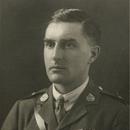From Our Listeners
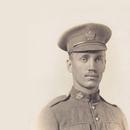
My Grandfather Tom Anderson: As with most men of accomplishment he wasn’t forthcoming about his experience in war or in his career as Vancouver’s longest-serving city fireman. As a child I didn’t know the right questions to ask... [Read more]
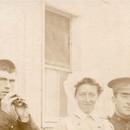
Constance Philip, A Heroic Nursing Sister: She was born in Scotland, came to Canada and enlisted on February 24, 1915. She was awarded three medals for her contributions in France, including at Abbeville Hospital... [Read more]
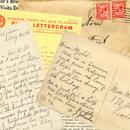
Major G.D. (Paddy) Cameron, Military Cross: Two of his friends had joined a highland regiment but changed their minds and came with him to the Straths. He recalled how they had done their riding tests in kilts! [Read more]

Passing the Eye Test: Harry Robert Burton, my father, was born in 1896 and joined the Canadian Army in 1916. He said it was because he was going to fail calculus in his first year of engineering at University of Toronto and the university would promote a student who enlisted to the next year... [Read more]
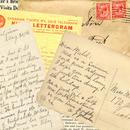
Surviving the Trenches: Like other patriotic youth, James joined one of many informal militia camps which sprang up after war broke out in August 1914. According to his sister, Anna, their mother thought James—then just sixteen—was simply continuing on with something like Boy Scouts... [Read more]
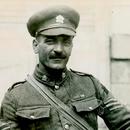
A Montenegran-Canadian Hero—Sergeant Valisa Bogichevich: At twenty-eight years of age and with militia experience, he rose through the ranks in Tobin’s Tigers to sergeant. He received a rare combination of gallantry awards: a Military Medal (MM), a Bar to the MM, and the Distinguished Conduct Medal... [Read more]
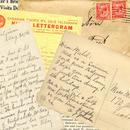
Remembering Ernest Edward Woodley: At age 102 he received the Legion of Honour presented by the French consul general. Other than being a bit hard of hearing, his general health was great—and he was a grand fellow... [Read more]

My Father’s Story: The three men cleared a machine-gun defended section of the road and captured no fewer than fifty German prisoners in the process. The events are well documented in the archives of the 72nd Battalion... [Read more]

A Sketch of Geoffrey Murray Downton: While serving with the Canadians in the trenches, he wrote a poem about men in the trenches: “…but we are very ordinary men.” In a letter to the young girl who was to become his wife, he described himself in the same way... [Read more]
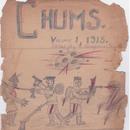
Acts of Memory: My earliest memories to do with the Great War were of my mother yelling at my grandfather to stop him from beating me on the head. It was 1955, forty years after the events that left my grandfather with what we now know as post-traumatic stress disorder. [Read more]
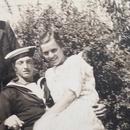
Two Families, One War: It was not uncommon for men from the same family to serve on opposite sides. Sometimes, marriage after the war brought together families with roots in different camps... [Read more]
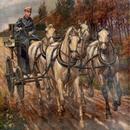
A Zeppelin Pilot’s Story: They were sitting at the breakfast table and they looked at one particular oil painting in my living room—my grandfather is driving four beautiful horses. And they said: "Well, who is that?" [Read more]
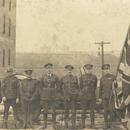
Private Buddy McKie of No. 3 Company: Slightly built, Buddy found himself in command of a platoon of rough and ready loggers and miners, as the 102nd was described in their regimental history as “The biggest, heaviest Battalion in the Empire.” [Read more]
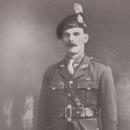
Lieutenant Jack Hudgins: He was at Vimy, where his brother still lies in the mud somewhere, and was in the midst of about eight other major battles. It must have destroyed him as he rose from a ploughboy to a lieutenant in a few years, but when I knew him he just let life happen.[Read more]
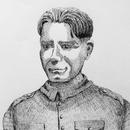
Joseph Buchan, Vimy Trench Survivor: As child I was a little afraid of him and Granny often entertained us in a separate room. I knew he had been wounded. His wrist was scarred and wouldn’t bend. [Read more]

Gordon Robertson Writes Home: Canadians were regarded as a force to be reckoned with by their enemies after the military success at Vimy. Joan MacKay tells us her father Gordon Stuart Struan Robertson wrote about a rising optimism just two days after the Vimy Ridge victory. [Read more]
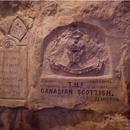
Graffiti in the Tunnels: A few years ago, a television documentary, Vimy Underground, was produced, which tells the story of these caves and of some of the men who carved graffiti in the trenches. [Read more]

James Lennox Dugan, Missing in Action: Three people from two sides of my family all served together in the same battalion before the links of the family were forged. James Lennox Dugan is my maternal great-uncle and was an enlisted man. [Read more]

Remembering George James Waters: I had felt many times that it was more than good fortune that was guiding me in my journey to know my grandfather. I almost felt his hand upon my shoulder many times on this journey. [Read more]
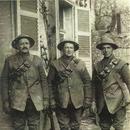
Postcard from the Front: After searching for a number of years for information on my great-uncle Hugh McDonald’s World War I service history, I was finally rewarded when I discovered his regimental number and an old postcard he sent home as they were preparing for the battle to take Vimy Ridge. [Read more]
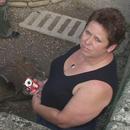
A Canadian Pilgrimage: Half a million people pay homage at the Vimy Monument each year. As Wendy Kerry can attest, experiencing the National Historic Site can have the power to change lives. [Read more]
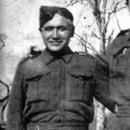
My Grandfather, Peter Christopher (1896–1970): Like many other veterans, Peter was forever scarred by what he witnessed at war with all its tragedies. When he was in the Army Reserves, he served as a support for his fellow community veterans, who counted on him in their leave time. [Read more]

Sapper Major Angus W. Davis: During the train journey, he made a decision about the recent outbreak of war. “Let the young fellas go first. If fighting lasts more than a couple of years, I will get involved.” “Davis, we’ve enlisted you,” said his pals as he stepped off the train. [Read more]
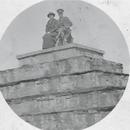
A Wartime Romance: "Recruiting was brisk everywhere and nearly every available man joined up; I felt I must soon enlist.” At the same time, Robina Stewart took a nursing position in Trail. Soon she too was over in London, with the nursing service of the Canadian Army Medical Corps. [Read more]
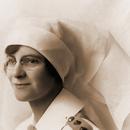
The Eyes of an Angel: I never heard about the hard times; he liked to talk about training in England, the horses he cared for, the camaraderie. His favourite story was how he opened his eyes one day and saw an angel. [Read more]
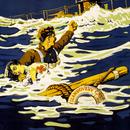
War Crimes—The Llandovery Castle: The brand new 517-foot, 11,423-ton Llandovery Castle had been commissioned as a hospital ship in July of 1916. She held 622 hospital beds, with a medical staff of 102, plus crew. [Read more]
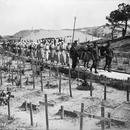
Tell Them to Carry on—The Bombing at Etaples: "Had a terrible air raid from 10:30 p.m to 12:30 a.m. Was a beautiful night—as light as day...Before I left for supper I heard distant guns and thought nothing of it." [Read more]

My Uncle Donald Rose: Less than two years after his enlistment, he was missing, presumed killed, on the first day of the Battle of Flers-Courcelette. He was one day short of his twenty-eighth birthday at the time of his death. [Read more]

The Women Left Behind: There are no medals for the women who are left behind to carry on alone when men heed the clarion call of war. In 1914 all the able-bodied men of the Gulf Islands left for a war that was supposed to be over by Christmas. [Read more]
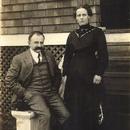
The Family William Morris Left Behind: The family doctor told William that with so many children and another one soon to arrive, he must not go overseas to war, but William was resolute. [Read more]
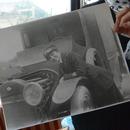
An Ambulance Driver with the Voluntary Aid Detachment: Women on the home front stepped up by the thousands to work—from farms to factories. Some volunteered overseas as nurses; others, like Grace Evelyn MacPherson, got close to the front lines behind the wheel of an ambulance. [Read more]

Socks for the Troops: My great-grandparents Mary Ann and Alfred Deardon were members of the Salvation Army from the time the Salvation Army “opened office” in Victoria in 1887. [Read more]
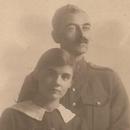
My Mother’s War: My grandparents didn’t consider the “wilds” of Canada to be an appropriate place to raise a daughter, so they left her in England. She lived a privileged life, learned all the things an Edwardian girl should learn, from needlework to music. [Read more]
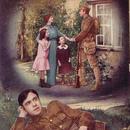
A Love Story—W.J. Johnston’s Postcards and Letters: In 1916, “Dos” decided to enlist even though he was well over forty, because by then he and Granny had two girls of their own as well as the seven children she had brought to their marriage. [Read more]
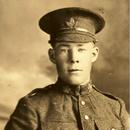
The Story of Edward Greenwood Christensen: Eddy grew up in a large family of nine children and, like all pioneer children, had to be tough, daring and self-reliant to survive. These attributes were later absolutely necessary to survive the horrible conditions in the mud and mire of France. [Read more]
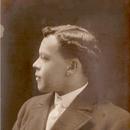
William Philip of the Canadian Engineers: He enlisted and left his wife at home with two very small daughters. Nancy was just two years old and Flora only two months old. His family was living with his father in North Vancouver, and while he was gone, his wife and daughters suffered from the Spanish influenza. [Read more]

Prince Rupert and the Peters Boys: Jack and Gerald both worked as bank clerks, but Noel was unable to find employment due to a moderate, but noticeable, mental disability. All three of the younger brothers trained with the Earl Grey’s Own Rifles militia but, unlike Fritz, would not have chosen a military career in normal circumstances. [Read more]

A Cool Head in the Trenches: The mud and the rain is the worst we have to contend with and is certainly hell. There isn’t much to write about from here, and we can’t say anything about the country. We are out for a rest now and we sure need it. It will take a week to scrape the mud off our clothes. [Read more]
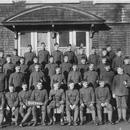
Quesnel, the Centre of Sacrifice in the Central Interior: Several men left town to make their individual contributions, but it was not until May of 1915 that there was any organized recruitment in the interior of the province. Until then, men who wished to enlist had to travel to Vancouver or Victoria as there were no military units operating outside the major centres. [Read more]
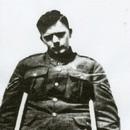
My Grandfather Alfred James Nash (1893–1988): Alf’s father went to the Boer War after the Black Week in 1899 and did not return. Alf’s older brother, Phil, had been given a one-way ticket to Saskatchewan in 1907. After the mum died, Alf at fifteen was also given a one-way ticket to Saskatchewan. He left the train at Portage and Main and found work. [Read more]

Albert Leslie Knight: On Sunday, March 24, 1918 (less than eight months before the war ended), Great-uncle Leslie was killed in action during the German offensive near Nestle, France, at the age of just nineteen years. Leslie’s parents were initially informed that their son was reported wounded and missing in action. [Read more]

He Never Knew His Father: What possessed twenty-eight-year-old John to enlist in 1916 is unknown as he would have been exempt as a married man until at least the Military Service Act of 1917. After training, he was drafted to the 2nd Canadian Mounted Rifles (CMR) and in France, he reported on May 31, 1916, in the Ypres sector of Flanders as one of 160 replacements. [Read more]
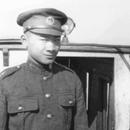
Two Chinese Brothers Determined to Serve: When World War I broke out, two brothers Wee Hong Louie (born 1894) and Wee Tan Louie (born 1897) from Shuswap wanted to enlist but most BC regiments refused all recruits of Chinese descent. [Read more]
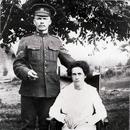
My Grandfather Herbert Arthur Armishaw: According to his attestation papers, he enlisted in the Canadian Infantry in April 1916 and saw action overseas as a member of the 102nd Battalion, Regiment 506704. I am told his unit was responsible for digging tunnels toward German lines to blow up enemy fortifications. [Read more]
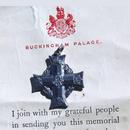
Ghost in the Barn: Officially, my mother’s brother, Private William Henry Wallington, died at Vimy Ridge in France. My aunt Lena’s husband, James Ackley, told us how Henry had returned from the dead to the family homestead in March 1917 with his horrific story. [Read more]

Dr. T.B.R. Westgate, POW: A short stay ended up to be much longer than anticipated as war travel restrictions began in the summer of 1914. His wife and three children—aged ten, nine and four—were left to find their own living in England. [Read more]
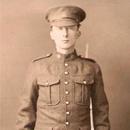
Wilderness to the Trenches: He made his way across the country to what is now Alberta, where he had adventures that young men in England could only dream about. He was good with his hands and willing to take on just about any job he was asked to do. [Read more]

“Joe in 1916”: A song I wrote tells a story that was told to me many times by my grandfather about his brother Joe, who was machine-gunned in World War I. [Read more]
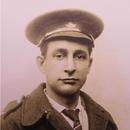
The War Diary of Corporal Kempling: Almost a hundred years ago, a twenty-two-year old carpenter from St. Catharines, Ontario, landed in northern France as a soldier in the Battle of the Somme. [Read more]
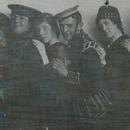
A Boy Soldier’s Diary: But Fred, the dynamic, fun-loving brother, enlisted in 1915. Desperate to be with his brother, my father enlisted on December 14, 1915, lying about his age to qualify. [Read more]

Sports Star to Trench Runner to Mayor: The eldest brother, Walker, was killed going over the top, and soon Lewis and his twin, Philip, had enlisted in different regiments with the hope of sparing their mother another tragic telegram. [Read more]

Another Runner: Gordon Stuart Struan Robertson was a “runner” in the trenches and later on had the use of a motorcycle! The going rate of pay was a cool twenty dollars per month. [Read more]
There’s Trouble in the Balkans: Cecil grew up in genteel poverty, so that at age sixteen, he enlisted as a cavalry trooper in the Royal Sussex Regiment to serve in the Boer War. When it ended in May 1902, he returned to Wales, with a still-unsated appetite for adventure. [Read more]

My Father’s Wounds: It is my belief that the effect that wars have on civilians often goes unrecognized. My story illustrates that point but I am certain my experience is mild compared to other children of returned World War soldiers. [Read more]
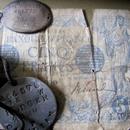
Mystery Soldier: William Rodger wasn’t a decorated officer, but he was a man who went to war and did his part. He should be honoured and not locked away in a box and forgotten about. [Read more]

Signaller Edward Francis Hill: My great-uncle Edward Francis Hill was born about the turn of the century in Bath, England. He joined the Canadian Field Artillery as a gunner during World War I. [Read more]

Gunner William Forrest Maxwell Sr.: I don’t think I even knew that grandpa was a Great War veteran until sometime after his death in 1982. He never talked about it, period. [Read more]

POW Sidney Percy Jones: Sidney decided to leave Regina but returned to join the Canadian Army in October 1914. His army number was 73668. He was eighteen years of age and five feet eight inches tall. [Read more]
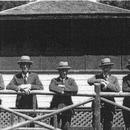
Chaplain Montgomery: Grandfather Montgomery was a chaplain at the front during World War I. Six of his sons and one daughter, a nursing sister, all served at the front as well. [Read more]

My Dad, Major Arthur Grosvenor Piddington: His father made him promise that when he died, Dad would return to Canada and look after his sisters. Dad kept his promise in 1906. His senior officers were appalled. [Read more]

Hugh and Jean Smith: World War I interrupted my grandparents’ plans to marry and immigrate to Canada, postponing their eventual arrival in Vancouver for twelve years! Talk about a very long engagement. [Read more]
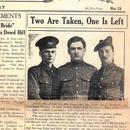
The Stewart Family—The Brotherhood—For King and Country: His father, John Stewart, was left to raise five children on his own. They were a family. War would change all of that. [Read more]

John E. Wheeler: On one occasion I noticed something addressed to Lieutenant John E. Wheeler and asked him about his time in the army. His story about enlisting in the army went something like this. [Read more]
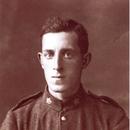
Reginald George Woods, 29th Battalion, CEF: Three children left England for much of their life, one to live in Africa, another to serve with the Indian Army and Reginald, who left at age fourteen. [Read more]
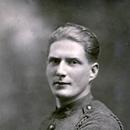
J.J. Carney: Over the next three months Bramshott suffered outbreaks of both German measles and mumps; Jim fell victim to both, spending several weeks in the isolation hospital at Aldershot. [Read more]
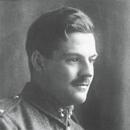
Walter John Hallam, #476612, Canadian Field Artillery: Volunteered with the Canadian Expeditionary Force at Esquimalt. His attestation papers indicate that he was a blacksmith by trade, with a scar on his left index finger and on the right forearm. [Read more]

Victoria’s Fighting Gillespie Family: George Gillespie, manager of the Bank of BC, had seven sons and one married daughter. By the end of 1914, five of those sons and the son-in-law were commissioned in uniform. [Read more]

